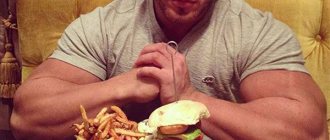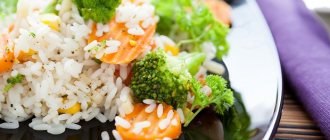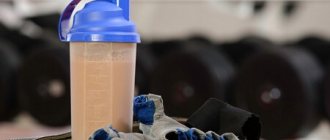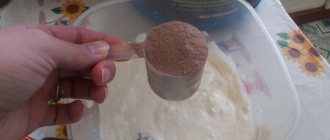A cheat meal is a diet-free meal when you can eat something that you usually don’t allow on a diet. There are many psychological benefits to this small and planned diet break. Following a diet for a long time is difficult for many, so the opportunity to eat everything that is usually not allowed at least once a week helps a lot mentally. You know that you don’t have forever prohibited foods that you crave simply out of principle.
A cheat meal can be tied to a celebration, dinner with friends and other social events, and then the need to follow a diet on this day ceases to be a headache.
Cheat meal for drying
Imagine a situation where you are on a strict protein diet, which involves significant restriction of carbohydrates and fatty acids. In this situation, the number of products allowed for consumption is significantly reduced. That is, about pies, cakes, sweets, fried potatoes, etc. – YOU CAN JUST FORGET
. Day by day, the desire to eat something forbidden increases significantly. Some relapse, while others use a cheat day. This is a great way to pamper yourself by consuming whatever your heart desires, while maintaining all your gains and without interrupting your diet. Would you say that this is not possible? - Not at all!
The fat cells in our body produce a special hormone, Leptin.
. The level of production depends on the amount of adipose tissue. Those. The more fat mass a person loses, the less leptin is produced. The hormone itself is involved in metabolism and energy distribution, and, together with the food center and hypothalamus, controls the feeling of hunger and satiety.
When leptin levels increase, the brain receives a signal to satisfy the feeling of hunger, and metabolism increases. With a sharp decrease in leptin levels, the opposite happens. A protective reaction is activated, the brain thinks that there will be no more food, energy consumption slows down, and the metabolic rate drops significantly.
Accordingly, the longer a person follows a low-carbohydrate, no-carbohydrate diet, or, more simply put, diets, the more rapidly his leptin level drops and the more his metabolism slows down. If leptin is not maintained at sufficient levels, the process of losing weight will be significantly hampered in the future. In case of prolonged excess of simple carbohydrates in the diet, leptin resistance may develop, and adipose tissue will accumulate more rapidly.
That is why, following a low-carbohydrate diet for 1-2 weeks, our body gets used to such nutrition, gradually slowing down the fat burning process. A PLATEAU EFFECT
or
DIET PLATEAU
, in which weight loss stops altogether, nothing more than a lack of leptin. A sharp increase in the calorie content of the daily diet thanks to a cheat meal allows you to resume and increase the speed of metabolic processes (by about 5-10%). Accordingly, the rate of burning fat deposits increases.
Another clear plus is psychological relief. Many people find it very difficult to maintain a strict diet for several weeks. I'm not even talking about how professional athletes feel who stick to a low-carb diet for 6 weeks or longer.
Cheat meal or carbohydrate refeed: what to choose?
There are many opinions on this issue. And each of them is based on the personal experience of people who have tried them on themselves. The positive impact of downloads is noted for both cheat meals and refeeds.
I am a supporter of carbohydrate refeed because I believe that you need to eat natural, healthy foods. This should become a habit, not a temporary measure. In my opinion, a cheat meal is, to a greater extent, a way to justify oneself for eating “garbage”.
In any case, whatever you choose, you need to understand that both a cheat meal and a carbohydrate refeed are a planned measure scheduled for a specific day. If you snapped and “got away” everything that was in the refrigerator, then this is not overloading - this is banal overeating. Likewise, if on the day intended for a cheat meal, you are constantly trying to “cram into yourself” as much as forbidden as possible from morning to evening, then this is the same absurdity as the previous case and has nothing to do with the planned stage of the diet.
And to receive more useful information every day, subscribe to our Instagram.
When is it relevant?
When and how to do a cheat meal? First of all, it is worth noting that this feature is not suitable for all categories of athletes. First of all, it is aimed at losing weight professionals. This means that it is aimed not so much at losing weight, but at cutting itself. And in general, even with a cheat meal on certain days, your weekly calorie balance still remains negative. People who do not exercise should not use a cheat meal. Why? It's very simple. Cheat meal is a very harmful diet, because in the absence of physical activity, cholesterol will easily begin to settle on the walls of blood vessels, which will not only harm your well-being, but can also slightly shorten your lifespan.
How often can you have a cheat meal? It all depends on who applies this hack to what diet plan:
- For low-carbohydrate athletes – no more than once every 2 weeks;
- For athletes on alternation – every second unload;
- For athletes on a carbohydrate-free diet - every week.
Do professionals need a cheat meal? Only if their mass-gaining diet partly consists of junk food. In this case, when you start cutting/losing weight, there becomes a psychological problem of the inability to “eat one breast with rice,” and, therefore, for these periods, a cheat meal can become a transitional stage that will help over time to completely get rid of dopamine addiction to various tasty harmful things.
As for the girls who first heard about this diet and decided to combine business with pleasure. The editors are in a hurry to disappoint. The main feature of a cheat meal is that it increases the consumption of polyunsaturated fatty acids and carbohydrates on certain days and is designed for a prepared body. Thus, the body of a bodybuilder/weightlifter/CrossFit athlete is able to adapt to storing glycogen, and, therefore, when eating junk food, he will try to get the maximum benefit from it. As for people who are not involved in serious sports, for them a cheat meal is simply a day of rest, during which the body strives to gain the maximum amount of fat tissue before the next fast.
What it is?
Cheat meal is a revolutionary system invented by fat people for fat people. At least, this is how many athletes initially treated it, who for the first time heard that there is a systematic violation of the diet, which, nevertheless, will not violate their goals and results, and even on the contrary, can help speed up the achievement of results. However, in reality everything turned out to be somewhat more complicated, and most importantly, this system works.
So, what is a cheat meal in weight loss? Cheat meal, based on its English name, means “food-related cheating.” In fact, this is a systematic violation of the diet. Its marketing goal is to make it easier for people to stay on complex diets for long periods of time. However, he also has another side, which we will now tell you about. The thing is that most marketing diets are extremely unbalanced. Most of them represent:
- Strict mono-diets that deplete all the body’s resources;
- Diets with a fixed calorie content, which does not take into account the real needs of the body;
- An unbalanced diet, overloaded with proteins, with a complete lack of omega-3 saturated acids and complex carbohydrates.
As a result, following a popular diet, instead of being beneficial, depletes all the body's resources, which is a huge stress for the body. People begin to dream about sweet pies, cakes, and any food whose nutritional composition a person actually needs at that moment. A cheat meal allows you to consume all this food once a week (sometimes less often) without restrictions. Thus, this allows you to compensate for the body’s need for healthy cholesterol, elements that allow you to restore the level of glycogen in the blood and sodium-salt balance. Yes, yes, all this is in that same junk food.
There are even special diets built entirely on the cheat meal principle. The same diet, which allows you to eat junk food within reasonable limits, filling it with plenty of fiber. Another useful feature that has come to sports nutrition is the possibility of psychological relief during strict diets. It just so happens that any diet that includes caloric restriction of more than 10% is a serious stress for the body, which forces it to launch optimization processes. The result is usually obvious and quite sad. This is a sharp slowdown in metabolic processes, an increase in catalytic processes, in addition to this:
- Reduced anabolic processes without additional stimulation;
- The occurrence of leaching of minerals from the blood;
- Possibility of seizures due to improper water-salt balance;
- Severe vitamin deficiency;
- Lack of transport proteins, which causes a sharp disfermentation of incoming nutrients;
- Reducing the amount of energy carriers;
- Lack of good cholesterol in the blood;
- Converting proteins into energy structures instead of synthesizing new amino acids.
- Emotional burnout, which causes an additional surge of norepinephrine, reduces the stimulation of endorphins and dopamine.
Cheat meal successfully combats these factors. It just so happens that if you correctly use a cheat meal once every 7 days after strictly limiting carbohydrates and calories, then almost all incoming nutrients are successfully broken down into useful components, which significantly increases the energy efficiency of food intake that day.
Cheat meal, how to do it right. Cheat meal - what is it in weight loss, how to organize it correctly
Svetlana Markova
Beauty is like a precious stone: the simpler it is, the more precious it is!
- People on a diet are forced to adhere to a strict diet, however, in order to get the expected result and support the body during weight loss, you should know how to use a cheat meal - what it is and what it is for. Properly planned carbohydrate refeeds during nutrition have a positive effect on metabolism and hormonal levels.
- Helps limit the amount of food you eat. During breakdowns, a person eats indiscriminately everything that comes to hand and does not benefit either the body or the psyche. A cheat meal helps to avoid this, in which you plan in advance what unhealthy but tasty food you will eat.
- Gives a positive attitude. The diet becomes easier to bear from a psychological point of view.
- Helps avoid disruption of the nutritional system. It’s easier to resist eating chocolate if after a few days you can eat, for example, a piece of cake.
- Unloads the digestive organs and kidneys. Most low-carb and low-calorie diets involve consuming a large amount of protein, which is difficult for the body to cope with. A rational cheat meal approach helps the gastrointestinal tract take a little break.
- Promotes weight loss. With the help of a cheat meal, metabolism speeds up, fat begins to be burned more actively, and strength for training appears. This effect lasts for several days after a carbohydrate refeed.
- Supports psychologically. Cheat meals support those who are losing weight and give them additional incentive, making the diet easier to endure.
Why do you need a cheat meal?
When constantly following a low-carb, monotonous diet, it is difficult to motivate yourself not to break down. At the same time, the stricter and more limited the diet, the more difficult it is not to go beyond the menu. What is a cheat meal for weight loss? In essence, a cheat meal is a planned violation of the nutrition system. Why do you need a cheat meal? If you occasionally allow yourself to eat your favorite, albeit high-calorie, foods, this will become a psychological relief and will serve as an incentive to further adhere to the diet: rewarding with tasty foods will give motivation and help you follow the menu over the next 6 days.
Knowing that on the seventh day you will be rewarded in the form of sweets, fast food or other goodies, you will be able to last six days without breakdowns or diet violations. In addition to the positive psychological factor, a cheat meal helps speed up metabolism: during a low-carb diet, the body reduces the rate of metabolic processes, saving a small amount of calories entering the body. This causes a plateau effect when losing weight. To activate fat burning, you need to deceive the body, letting it understand that there are a lot of resources coming in and it’s not worth saving them.
Thanks to cheat meals, your metabolism speeds up and fats begin to burn faster. At the same time, since during a strict diet the body lacks carbohydrates, the athlete’s performance decreases significantly. After carbohydrate refeeds, the energy supply increases, which has a positive effect on a person’s overall tone, well-being and physical capabilities (for those who do not know what a refeed is - it’s a carbohydrate load).
Benefits of a cheat meal
Dieting is usually a pursuit of an ideal body, which brings serious discomfort. What are the benefits of a cheat meal:
Cheat meal rules
Of course, a cheat meal is not at all a mindless consumption of everything your heart desires - so that breaking your diet does not lead to disastrous consequences for your waistline and health, you will have to follow a number of rules:
1
It is important to relax sometimes and at least sometimes stop counting every calorie - however, before you start practicing cheat meals, you must be sure that you are able to limit yourself to one “bad” meal and return to proper nutrition on the same day
2. For a person with weak willpower, it is better to choose a diet that is not too strict, otherwise a single violation of the diet can lead to a week of gluttony and a return to the previous diet.
3. In addition, before you start allowing yourself such indulgences, you should stay for at least a month without violations. It would be naive to start a diet with a cheat meal.
4. It is recommended to have a cheat meal after a workout - at this time your body is able to extract the maximum benefit from everything you eat.
5. Fats and carbohydrates eaten before training that you will not be able to use up will turn into body fat. But after training, the catabolism process starts in the body, which continues to burn calories for another hour and a half to two hours after it ends.
6. On the day of a cheat meal, you should not give up your usual diet - after enjoying your favorite food, return to proper nutrition as soon as you are hungry again.
7. Don’t have cheat meals too often - let them become long-awaited holidays, for which you will have to approximately follow your diet for a certain time. Think of cheat meals as encouragement for yourself.
8. Choose a day for chi - when you can enjoy your favorite food to the maximum, and not eat it in a hurry, coming hungry after work. For example, you can arrange a cheat meal on a weekend, during a country picnic or going to a restaurant.
9. Don’t be modest - a cheat meal will not have the desired effect if you limit yourself to a small piece of chocolate or pizza - let your diet violation bring you real pleasure - this is the only way you will receive moral satisfaction and the necessary physiological shake-up.
Of course, this does not mean that you need to eat until you feel sick, otherwise you risk inflicting a crushing blow on your gastrointestinal tract, which will significantly damage your pancreas and liver.
And most importantly, try to get the most out of the cheat meal and don’t blame yourself for being weak-willed - remember, this is a completely legitimate “belly celebration” that will not harm your figure.
Yulia Prikhodko
HOW TO USE CHEAT MIL CORRECTLY? - step-by-step instruction
So how to do a cheat meal correctly, what do you need to know? It is very important to follow all the instructions and know that there is a fine line between retreating and failing the diet. Here are the step-by-step instructions:. Correct cheat meal:
Correct cheat meal:
- Ideally, the day before your planned “cheat” with food, you visit the gym. Cyclic training with high repetition rates is ideal. After training, carbohydrates and fats will be actively burned.
- Before going to a restaurant, think about your order in advance. This will help you avoid eating too many calories. After all, after seeing the menu, many are ready to order more than they can eat.
- Treating yourself to an indulgence and performing the “overeat” operation are two different things. Therefore, you should not go overboard with portion sizes. If the portion you order is too large, eat half.
- Under no circumstances should you indulge yourself in front of the TV. Experts have proven that in this way a person consumes 25% more food. And this is the path to overeating.
- Savor every bite and chew your food thoroughly. Slow consumption will help you feel full faster, which means avoiding overeating.
- When choosing meals, keep in mind that meals with a lot of carbohydrates have the greatest impact on leptin levels. In addition, they satisfy hunger well.
- Try to avoid fatty foods. Fat is quickly stored as calories and does not increase leptin levels at all.
- Drink water before eating (15 minutes before). Best with the addition of lemon. This will help activate all processes in the body.
- Try to keep your food nutritious and not filled with empty calories. That is why if you choose between chocolate cakes, a sweet drink and a burger, French fries, then the latter is better. It's a high-calorie food, but it has more nutrients.
- After a cheat meal, immediately return to the “right path”. Avoid temptation at all costs.
- If you feel like your workouts are no longer enjoyable, treat yourself to a plate of chicken spaghetti. This will help replenish glycogen reserves and improve your mood. However, don't overuse it.
Cheat meal rules must be followed. But the main rule here is moderation. It is advisable that during a deviation from the diet, the energy value does not exceed the usual by more than 20%.
What can you eat?
The basis of this deviation from the diet is fast food, but other foods are also possible. What is included in the sample list:
- Chips, crackers.
- Pizza, pasta.
- Cake, pastries, ice cream.
- Chocolate, candy.
- Dumplings, sausage, frankfurters.
- Shish kebab, fried meat.
- Peanut or chocolate butter.
- Sauces, mayonnaise.
- Pancakes, pancakes, pies, pies, donuts.
- Sweet carbonated drinks.
You can choose the food items that you like best from this list. As mentioned above, one should not forget about moderation during a cheat meal.
Strategies
The correct cheat meal looks like this: once a week, 1 meal. However, several methods have now been developed that deviate from the basic scheme, but, judging by the positive reviews, they work.
Strategy 90/10
With this strategy, the diet time takes up 90%. At this time, a deficiency of carbohydrates and leptin is created. But 10% is the time of active replenishment of the deficit. This means that a person is on a diet for 9 days, and 1 day is a deviation from the diet. However, very often with this strategy, 2 meals per week are reserved for cheat meals.
It is important to know that nutritionists do not advise choosing the 90/10 strategy if a person is overweight by more than 5 kg. In this case, it will significantly slow down or even eliminate the results of the diet
Strategy 80/20
This strategy is even easier. Here the number of fasting days increases to four per week. But it is not very suitable for those who decide to lose a lot of weight. It is suitable for weight stabilization. This is a great option for professional athletes who train daily. With a sedentary, sedentary lifestyle, it will be ineffective, and perhaps even harmful.
Cheat day strategy
This approach can easily be called a celebration of the belly. But we are not talking about permissiveness. You can eat any food all day, but in small quantities.
It is important to know that such a system is suitable for professional athletes, bodybuilders, and marathon runners. But for weight loss, the diet of ordinary people, it is not suitable
All of the above options are suitable for people leading an active lifestyle and athletes. But for an ordinary person, it is better to stick to the usual cheat meal scheme. But even the usual scheme will not work if the amount of extra pounds is too large. In any case, consultation with a nutritionist is necessary.
How to calculate for yourself?
The algorithm is simple:
- Find out your body fat percentage and calculate your lean body mass.
- Determine your dietary category based on your fat percentage.
- Determine your training category based on your activity level.
- From the second table, find out the frequency and duration of refeeds for your diet and training category.
- From the first table, find out the amount of carbohydrates for your refeed duration
Example
Girl weighing 60 kg, 23% body fat, three heavy lifts per week
- Lean body mass: 60 kg x 23% = 13.8 kg net body fat. 60 kg - 13.8 kg = 46.2 kg
- Dietary category: 1
- Training category: 1
- Refeed duration: 5 hours (optional)
- Amount of carbohydrates. Lower limit: 3 g x 46.2 kg = 138 g. Upper limit: 6 g x 46.2 kg = 277 g . Divide the selected amount of carbohydrates into several meals. Protein is the normal daily requirement. Fats - no more than 50 grams.
Adviсe
Plan your cheat meal day in advance and don't try to make room in your stomach for treats. In addition to delicacies, eat regular food. Don't create artificial hunger in order to eat more of your favorite foods. A cheat meal will definitely lead to a planned disruption to the schedule. If you don’t feel like eating after a cheat meal, you can skip the subsequent dinner - your body has enough calories. The next day, do an intense workout. Cheat meals are normal, don’t reproach yourself for being weak. This is a planned event, from which it is advisable to enjoy, then the entire diet process will take place without stress and nervous breakdowns. Make sure that the cheat meal does not unexpectedly last for several days - this also happens
If you know that you cannot cope, it is better not to start eating. It is imperative that the cheat meal goes according to plan, and not when you want to eat unhealthy foods. For the event, choose balanced but high-calorie foods so that all body systems can be saturated with such an important substance as glycogen. It is important to choose the right moment for a cheat meal. Everything needs to be arranged so that the cheat meal becomes not just a planned event, but also a great holiday
Therefore, don’t just choose the dishes you like, but provide a fun environment for this action - go with your friends to a grand party where you can try delicacies, getting the full range of emotions from the holiday. During the diet, try to engage in self-knowledge, try to analyze your desires. If you have an irresistible desire to eat something tasty, do not rush to satisfy it, but just think about why this is happening. Usually such a desire is a consequence of stress, an uninteresting and empty life schedule, a common skipping of meals, which leads to animal hunger. In such a situation, you should calm down, try to return to your usual schedule, diversify the menu, conducting various culinary experiments with new dishes. Don't even think about weighing yourself the day after your cheat meal to avoid suffering from the weight you gain. Weight can indeed increase, but its main component is water, which is formed from eating unhealthy foods. This water will definitely go away after a few workouts.
Feel free to help your body with special medications. It is difficult for an organism accustomed to abstinence to digest unhealthy food - digestive tablets will help.
Whether it is necessary to have a cheat meal or to strictly adhere to diets is something everyone decides for themselves. You need to arrange your diet in such a way that you feel comfortable and happy.
httpv://www.youtube.com/watch?v=embed/oXWvTYtk8jk
What is a cheat meal?
Carb loading can take two forms: carte blanche (eat whatever you want) or one free meal and the rest of the meals remaining within the diet. The choice depends on your current calorie deficit and the specifics of your diet.
Let's start with a calorie deficit. If someone severely limits the energy value of the diet (cutting calories by 50% against the backdrop of heavy training), a loading day is needed.
Why do you need a loading day?
You diet, cut calories, increase your cardio, and so on. Your goal is a systematic weight loss of 0.5-1 kg per week. After all, you did the calculations and created an energy deficit.
Unfortunately, your body hates you for it. More precisely, it loves you so much that it wants to save your life and protect you from starvation. To do this, the body makes adjustments that were useful for people who hunted and gathered, but harmful for an athlete who intended to dry out.
What is the essence of these adjustments?
After a couple of days on the diet, your metabolism slows, your hunger increases, and more and more muscle mass is sacrificed for energy generation. The human body adapts very effectively to new conditions.
What happens at the hormonal level? The secretion of thyroid hormone T3 decreases by 30%; the conversion of T4 to T3 in the liver slows down. The half-life of cortisol increases and the synthesis of insulin-like growth factor (IGF-1) decreases.
There is so little glycogen in the muscles that growth becomes impossible, despite training. You will likely lose muscle mass. At this point we need to talk a little about leptin because it also plays an important role in weight loss. This is a regulatory hormone that suppresses appetite, prevents overeating and prevents excess weight gain.
When you diet, the opposite happens. By reducing caloric intake, leptin levels decrease and appetite increases. Those who are losing weight quickly find themselves at a disadvantage: in a matter of days, the metabolism automatically slows down by 30%, and hunger attacks intensify.
It turns out that during a diet, all the nightmares of those losing weight turn into reality: the active breakdown of protein is accompanied by a decrease in the concentration of T3, IGF-1 (insulin-like growth factor - one of the strongest anabolic hormones), leptin and testosterone. Why is this a nightmare? Because not only are you not burning fat, but you also look worse than before.
Loss of muscle mass leads to a decrease in muscle volume while maintaining subcutaneous fat; people with this build can be seen on treadmills all over the country. Problems begin after a few days on a diet, not after a month, and training does not solve them. Very soon you hit a wall; fat doesn't burn, instead you sacrifice muscle mass.
What? So much effort, but I look worse and feel absolutely terrible? Yes, this is one of the reasons why most diets fail. But this madness can be put to an end.
Some simply use pharmacology. They give injections of testosterone, human growth hormone and insulin, combining them with oral thyroid hormones to restore hormonal balance. This is not an option for us. We need to find a way to regulate the hormonal profile quickly and without illegal drugs.
A refeed helps solve the problem. To counteract the adaptation process, it is necessary to increase the calorie content of the diet and load every five to seven days. A refeed is a carefully planned loading day, when the caloric content of the diet is 130-150% higher than the level of energy balance.
Increasing the caloric content of the diet in a short period turns adaptive reactions 180 degrees. The secretion of testosterone, leptin and IGF-1 increases; cortisol secretion decreases; Loss of muscle mass stops and growth is even possible. As a result, metabolism accelerates, which creates conditions for further reduction of fat mass.
Cheat meal for 3000 kcal. The difference between refeeds and cheat meals
Although the effects are similar, here are the main differences:
Cheat meals are planned deviations from the diet. They are scheduled in advance for certain dates or days of the week. In a sense, this is a reward for strictly following the diet, and for most people it is a refreshing change for the psyche and a break from boring dishes (if the diet is made up of the same foods). Please note that “cheat” meals cannot be every day, then this is a regular diet. (Call it “cheatlife” then – Zozhnik’s note).
Refeeds are added into the diet as needed when required for a specific appearance, training performance, and athletic record (or lack thereof). Refeeds are not planned in advance; they are used according to your well-being/condition.
Usually, a refeed is resorted to when an athlete has been on a diet with a calorie deficit (usually carbohydrates) for quite a long time, and his glycogen reserves have depleted. Refeeds are used even in pre-competition preparation, in the last weeks before a performance. It all depends on individual characteristics: how a person digests carbohydrates, at what speed they are processed into glucose.
In the case of bodybuilding (and other body assessment competitions), refeeds are needed when the muscles begin to “deflate” and need to be “filled up” again. Refeeding also helps maintain muscle mass, because when glycogen reserves are depleted, the body triggers gluconeogenesis (the process of converting non-carbohydrate compounds, such as amino acids, into glucose. Even muscles can be used if you are in a calorie deficit). And usually a refeed is much “cleaner” than an “unbridled” cheat meal.
Of course, a cheat meal gives similar effects: it replenishes glycogen stores and increases the level of leptin (the hormone that controls appetite), and most importantly, it brings psychological relief if you have been dieting too strictly and have been in a calorie deficit for a long time.
A cheat meal is a planned reward after a certain period of dieting, and a refeed is required when glycogen is used up and leptin is reduced. But neither one nor the other is at all necessary as long as there are no physiological obstacles to losing weight in the body. And while you still have a lot of excess fat.
Difference from loading day
Newbies often have the question: “What is a cheat meal and how is it different from a fasting day?” The concept of “loading day” is mainly used by athletes.
A cheat meal involves eating freely for one meal, while on a fast day you can eat whatever you want. Such errors in nutrition can lead to weight gain, while a cheat meal does not lead to such consequences. On the contrary, it activates the functioning of the body and metabolism.
During the day, you should stick to your usual restrictions, and the “belly feast” should simply replace one of the meals. It is better not to hold such an event too late. Try to choose a time before 6 pm. Otherwise, heavy and unusual food may take a long time to digest and cause poor sleep.
You should not allow yourself alcohol during relaxation. Not only will it bring in extra empty calories and reduce your sense of responsibility, but it will also increase your appetite. To avoid a breakdown and continue to maintain your body in a healthy state, opt for balanced but high-calorie meals.
For “free eating” it is better to prefer a public place. This will help you limit yourself to eating just one or two dishes. At home, the temptation to continue is very great, so it is better to avoid it.
How not to do carb loading
Refeeding is not a way to see how much you can eat in a few hours or days. A refeed should not be understood as an opportunity to overeat. A refeed is just an increase in carbohydrates, with the same protein and fat levels as on any other day.
It’s not scary if some harmful products slip through, but let it be something high-carbohydrate and low-fat - marshmallows, marshmallows, sherbet, low-fat baked goods. But donuts, cookies, ice cream, chocolate and cakes are already a problem that will lead to a strong excess of calories. Combining a lot of carbs and fat is a great way to regain all that lost fat.
A refeed is still eating properly throughout the day with enough protein, vegetables and fats (no more than 50 grams per day). It's just that your carbs are much higher that day. And remember that a refeed takes the place of a cheat meal. Either one or the other in your weekly cycle.
What can you eat during a cheat meal, and what should you cross off the list?
In fact, a cheat meal is designed specifically to allow a person to eat their favorite foods from time to time while on a diet. However, healthy and natural products are best suited for the “belly celebration”. Of course, pizza, hamburgers and other popular delicacies rarely contain completely natural ingredients. But if you are already set on “scamming”, then you will need to choose the lesser of two evils.
Don't forget to monitor how your body reacts to the foods you eat. It is quite possible that the stomach, having tuned in to healthy food, will not want to take “harmful” food. Therefore, if after eating a piece of pizza you feel heavy, then it is better to give up the cheat meal and do not clog your body with unnecessary products.
But if during the “breaks” you feel great and do not feel any discomfort, then you can easily cheat further.
Cheat meal: nutritionist's opinion
We asked nutritionist Lyudmila SELEDTSOVA about the benefits and harms of cheat meals.
— Are you a supporter of cheat meals?
— I am neither a supporter nor an opponent of cheat meals, I use it very selectively. If the patient is well motivated and follows all the recommendations, he has good results in losing weight, I can give him a relaxation in the diet for psychological relief. And it’s a completely different situation when a patient comes to me who is resistant and not amenable to diet therapy. He tried a lot of things, repeatedly quit numerous diets, and any violation of the regime in this case will lead to a breakdown.
— What tasks does a cheat meal perform?
“The task, in my opinion, is one: relax a little and reward yourself for your work and efforts. This stimulates further achievements. After all, dietary nutrition cannot be called anything other than a feat - the entire habitual way of life is broken! It is clear that this is done for the benefit of the patient, for his health and longevity. However, the process of losing weight is long and difficult.
- Advantages and disadvantages?
Plus - psychological relief. The downside is that a person can become very relaxed and secretly give himself a “cheat meal” not once every one or two weeks, but once a day. In addition, foods and dishes for the “belly feast” can be completely unhealthy, containing large amounts of transgenic fats, sugar and salt, which is not very good for health.
— How to properly organize a cheat meal?
— What mistakes do “cheat meal” people most often make?
Some of my patients perceive a cheat meal as a loading day and continuously eat whatever they want. It is not right. Another mistake is when a person allows himself to break his routine several times a week and eat something from the list of unhealthy foods, perceiving it as a cheat meal. And the third mistake is when the patient, while doing everything right, begins to scold himself. The whole meaning of the idea is lost, because psychological relief does not occur.
How often should you do a cheat meal?
With a few exceptions, anyone losing weight can do one or two cheat meals a week without compromising their results. But remember that a cheat meal is not a festive feast, after which it is difficult to get up. This is one portion of the prohibited - pizza, ice cream, chips, cake, chocolate, burger and the like.
The exceptions are those who are just starting their diet. For the first few weeks, it is better for them to adhere to it quite strictly in order to get used to the diet and healthy foods, and enter a new regime. Cheat meals prevent you from getting rid of the unhealthy eating habit that has caused you to gain excess weight. Over these few weeks, you may fall out of love with some foods that stimulate dopamine and serotonin receptors in the brain, like drugs, and cause constant cravings for them. But this requires at least a few weeks.
Finally, don’t do a cheat meal two days in a row - this risks going on a food binge. It is better to distribute cheat days evenly throughout the week. For example, Wednesday and Saturday, instead of Friday and Saturday.
By Lyle McDonald, bodyrecomposition.com
Cheat meal and body drying
Drying the body consists of getting rid of subcutaneous fat without losing muscle mass and involves carbohydrate starvation against the background of increased protein consumption. The basic rules here are the same as for most diets:
- Consuming fewer calories than you burn;
- Maintaining a high metabolic rate through training and fractional meals.
Drying, as a rule, lasts about five weeks, during which there are many dietary restrictions, which is why the diet becomes boring and monotonous.
But the reward for all the suffering is a beautiful, sculpted body. In order to achieve the desired effect, you must conduct a cheat meal according to the following rules:
- Only after training;
- No more than one or two times during the entire period of drying;
- Eat only healthy food, no cakes, processed foods or chips.
Nutrition and training in a moderate calorie deficit
How should a person with a moderate calorie deficit eat and exercise? Let's assume that the deficit is 300 calories, the question is whether a full loading day is needed in this situation.
There is no urgent need, but you will still need to change your diet after a couple of weeks.
The changes in hormonal balance in response to dieting are similar to those that occur during an extreme calorie deficit. The secretion of testosterone decreases, and cortisol increases. Metabolism slows down. However, since glycogen stores are not depleted, I recommend only one high-carb cheat meal to prevent possible fat storage.
Depending on the athlete’s body weight, from 200 to 500 grams of carbohydrates is enough to replenish muscle glycogen, increase the secretion of thyroid hormones, as well as create a general feeling of happiness and harmony with the world.
Changing your caloric intake every few days is a great way to maintain your metabolic rate. A popular scheme is two days on a diet and one day of carbohydrate loading.
Monday. Moderate calorie deficit, 100 to 150 grams of carbohydrates. Training:
- 4x10 barbell squats
- 3x10 lunges
- 3x10 straight leg deadlift
- 4x30 calf raise
- 3x10 biceps curls
- 3x10 dips
Tuesday. Monday's diet is repeated. Training:
- 3x10 pull-ups
- 4x10 incline bench press (head up)
- 4x10 one-arm dumbbell row
- 4x10 barbell or dumbbell overhead press
- 3x10 crossover crossover
- 2x10 dumbbell lateral raises
Wednesday. You get twice as much carbohydrates, in our example - 200-300 grams. You cut fat in half, no strength training. You can eat a small dessert or a bowl of pasta to fill the carbohydrate gap and restore your peace of mind.
Thursday. Return to Monday's diet, work on weak parts of the body. Let's say it's the back and chest:
- 4x10 fly with dumbbells
- 15-12-10-8-8 dumbbell press on an incline bench (head up)
- 3x20 crossover
- 4x10 pull-ups
- 3x6 deadlift in power rack
- 3x10 horizontal row on the lower block while sitting
If you don't feel full and energized on Thursday, the diet may be too restrictive and you need to switch to a two-day diet/two-day load pattern.
Friday. Should be a day of rest. Stick to your normal diet and then start the cycle all over again.
How is a refeed useful?
In addition to the opportunity to take a mental break from the diet and eat normally, carbohydrate loading has very specific physiological benefits.
Replenishing muscle glycogen stores
Most weight loss diets involve reducing carbohydrates, sometimes to the point of eliminating them completely. On a “no-carb” diet, muscle glycogen is depleted, and workouts become sluggish and painful, and working weights drop. Refeeds allow you to stick to a low-carb diet, but train intensely.
Temporarily “turning off” catabolism
The lower your body fat percentage, the higher your risk of losing muscle on a diet. Carbohydrate loading temporarily stops catabolism and protects muscles from breakdown, which is especially important for those who exercise.
Improving hormonal levels
One of the most important benefits of refeeds is the restoration of the level of hormones responsible for the body’s adaptation to hunger - for reducing metabolic rate, eating behavior, and weight regulation. These hormones include leptin, ghrelin, insulin, peptide YY and others.
Rule 90/10
For a diet to be effective, you should follow the 90/10 rule. 90% of the time you need to stick to a healthy diet, the remaining 10% give yourself a break.
For example, if you eat four meals a day, that's 28 meals a week. Following the 90/10 rule, you can have a cheat meal 2-3 times a week or devote one day to gluttony. But trainers do not advise getting too carried away and urge you to limit yourself to one “loading” meal per week. People with a large percentage of subcutaneous fat are allowed to have a cheat meal once every 2-3 weeks.
Reboot for the body
If you sit on protein and low-calorie diets for a long time, the body will adapt to the new nutrition system and the weight will increase. This phenomenon is called the “plateau effect.” Leptin, the hormone responsible for feeling full and regulating energy reserves, is to blame. It is produced by fat cells. With a low-calorie diet, leptin levels drop, metabolism slows down, and the body goes into energy conservation mode. A cheat meal serves as a shake-up, after which the fat burning process starts again and weight begins to decrease.
A cheat meal is also useful from a psychological point of view: it is an emotional reboot and additional motivation at a time when you want to lose your temper. After all, it is much easier to stick to a diet, knowing that on the weekend you can treat yourself to your favorite dishes. Although, if you have correctly compiled your diet and balanced your meals with proteins, fats and carbohydrates, then there will be no strong “withdrawal” for sweets and unhealthy foods.
Features of a cheat meal
During a cheat meal, it is not recommended to exceed the usual amount of calories by more than twice. It's also best to avoid high-fat foods, as dietary fat molecules are more easily converted into subcutaneous fat and deposited on the hips or waist. Alcohol during a cheat meal is taboo!
If your diet is predominantly plant-based, you can indulge in a meat cutlet or ice cream. If you're on a low-carb diet, it makes sense to indulge in baked goods, pasta, lasagna and pizza during your fasting day. By the way, this is the basis for a useful analogue of a cheat meal - a refeed. It involves loading with high quality carbohydrates: fast food and buns will not do.
A smart approach to cheat meals
- Prepare in advance. Set a cheat meal date in advance and determine a list of products. A cheat meal is a planned diet violation, which means that accidentally eating a donut for lunch is an ordinary breakdown.
- Do some pre-work. It is advisable to work up a good sweat in the gym before your cheat meal. After training, your metabolism will accelerate and digest all deviations from the rules several times faster.
- Gadgets aside. Eating in front of the TV or computer is not a cheat meal. First, you won't be able to fully enjoy that "forbidden food" you've been craving all week. Secondly, eat two or even three times more than you planned.
- Don't forget about your regular diet. You shouldn't sacrifice standard meals on the day you have a cheat meal planned. Just fit it into your regular routine as a bonus. And after a cheat meal, it wouldn’t hurt to have a fasting day, such as an apple or buckwheat day.
- First subtract, then add. In order not to be tormented by a feeling of guilt during the “loading”, you can “underfeed” yourself 150-200 kcal every day for a week. Thus, by the weekend you will be able to save at least 900 kcal, which you can spend on a cheat meal with a clear conscience.
Cheat meal. Cheatmeal
Cheatmeal
CHEAT MEAL
Cheat meal (“cheat meal” from the English “cheat with food”) is one of the planned diet violations. In addition to its benefits for accelerating metabolism, cheat meals also relieve psychological stress caused by dieting, helping to control situations in which you want to eat a lot of forbidden foods. Cheat meal - the opportunity to eat what you really want, without restrictions, but only one meal at a set time (for people with a large % of fat - once every 2 or 3 weeks, for people with a small % of fat - once a week).
Cheat meal tasks:
1) acceleration of thyroid function = increased thermogenesis, which persists up to several days after the “load”
2) unloading of the gastrointestinal tract from exorbitant amounts of protein consumed during low-carb-low-fat days to maintain at least some calorie intake and maintain muscle mass
3) PSYCHOLOGICAL UNLOADING! (very important point!!!). On this day, you can burst into sweet and fatty foods so that the next day the hated chicken fillet will seem like a delicacy again!
Exactly “junk food”! From dumplings to chips, ice cream, hamburgers, marshmallows and fries! By the evening, the exchange unwinds so much that you are simply drenched in sweat, feeling like a hot stove! In the morning you ALWAYS get up in the best shape: full and tough. A small amount of water under the skin drains over the next couple of no/low carb days. The only negative: the pancreas is slightly in shock from the sudden happiness that has fallen on it in the form of simple sugars.
IMPORTANT! Use cheat meals only on a no-carb or low-carb diet.
This “methodology” is used by many professional bodybuilders, for example Evgeny Mishin.
“Cheat Meal” has shown many to be effective for the fat burning process itself, and most importantly, psychological relief - you eat what you dreamed of, what you passed by with a sad face in the supermarket.
“Chit mil” for the first time (or always) is not the whole day of the “celebration of the belly and permissiveness”, but only one meal and not late in the evening.











